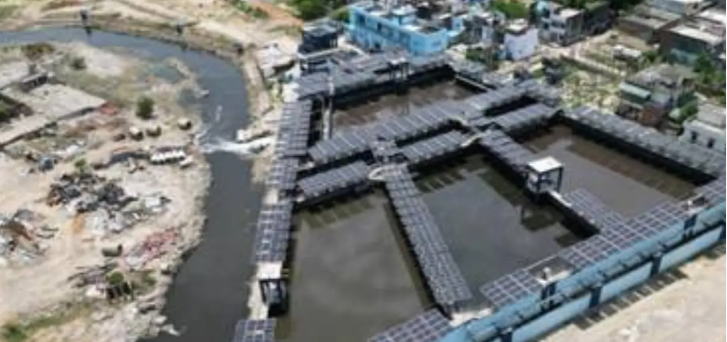Namami Gange Mission 2.0 Projects in UP and Bihar (GS Paper 2, Government Policies)

Introduction to Namami Gange Mission 2.0
- The Namami Gange Mission 2.0 is a major initiative by the Government of India aimed at the rejuvenation and conservation of the River Ganga.
- Building upon the previous Namami Gange Programme, which was launched in June 2014 with a substantial budget of Rs. 20,000 crores, Mission 2.0 continues to focus on cleaning the river and improving its ecological health through various projects and technologies.
Key Projects and Investments
Munger, Bihar
- Project Cost: Rs. 366 crores
- Scope and Components:
- Sewerage Network: The project includes the development of a comprehensive 175 km sewerage network.
- Sewerage Treatment Plant (STP): Construction of a 30 MLD STP designed to treat sewage before it enters the Ganga.
- Implementation Model: DBOT (Design, Build, Operate, and Transfer), which involves private sector participation for design and construction, followed by operational management before transfer to the public sector.
- Impact: This project will benefit approximately 300,000 residents by significantly improving the city’s sanitation infrastructure. It will help prevent untreated sewage from entering the Ganga, thereby improving the river's water quality and overall health.
Mirzapur, Uttar Pradesh
- Project Cost: Rs. 129 crores
- Scope and Components:
- Interception and Diversion: The project focuses on intercepting nine drains and rehabilitating six existing drain interception structures.
- New STPs: Two new STPs, Pakka Pokhra and Bisunderpur, each with a capacity of 8.5 MLD.
- Increased Capacity: The total sewage treatment capacity in Mirzapur has been increased to 31 MLD.
- Impact: By preventing untreated sewage from entering the Ganga, this project significantly enhances water quality and supports the river’s aquatic biodiversity. The improved infrastructure will also address pollution effectively.
Ghazipur, Uttar Pradesh
- Project Cost: Rs. 153 crores
- Scope and Components:
- Interception and Diversion: Includes the development of a 1.3 km I&D network and a 21 MLD STP.
- Sewage Treatment: This project will treat sewage before it is discharged into the Ganga, thus preventing untreated waste from polluting the river.
- Impact: The project aims to treat sewage more effectively and ensure that untreated waste does not enter the Ganga, contributing to better water quality and environmental health.
Bareilly, Uttar Pradesh
- Project Cost: Rs. 271 crores
- Scope and Components:
- Interception and Diversion: The project involves intercepting and diverting 15 drains.
- New STPs: Construction of three STPs with a combined capacity of 63 MLD.
- Impact: This project will improve the quality of water in the Ganga by treating sewage at the STPs, thereby preventing untreated sewage from entering the river and reducing pollution in the River Ramganga.
Technical Aspects and Standards
- Sewage Treatment Technology: Advanced Sequencing Batch Reactor (SBR) technology is utilized for efficient sewage treatment. This technology is known for its effectiveness in treating wastewater and meeting high-quality discharge standards.
- Compliance with Standards: All projects are designed to meet the stringent discharge standards set by the National Green Tribunal (NGT), ensuring that the treated water meets the required environmental and health standards.
National Mission for Clean Ganga (NMCG)
- Role: The NMCG is responsible for overseeing the implementation of the Namami Gange Mission and ensuring that the projects align with the goals of river rejuvenation and pollution abatement.
- Government Commitment: Under the leadership of Prime Minister Narendra Modi, the NMCG is committed to creating a cleaner and more vibrant Ganga, reflecting the government's dedication to environmental conservation and public health.
Conclusion
- The completion and operationalization of these projects under Namami Gange Mission 2.0 represent a significant achievement in the efforts to restore the River Ganga’s health.
- By enhancing sewage treatment capacity, improving sewer networks, and intercepting pollutants, these initiatives aim to provide long-term benefits for the river’s ecosystem and the communities living along its banks.


